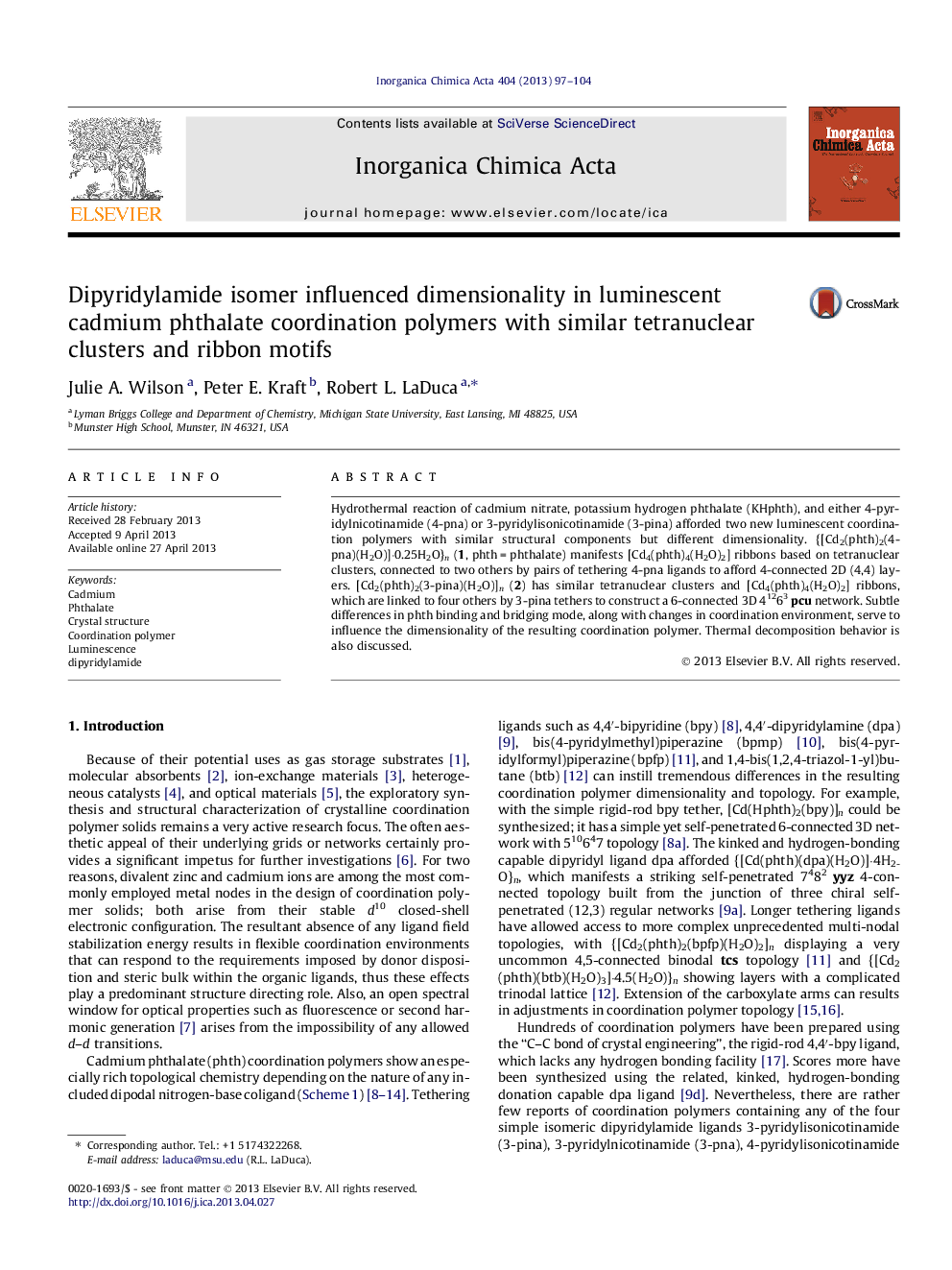| Article ID | Journal | Published Year | Pages | File Type |
|---|---|---|---|---|
| 1312308 | Inorganica Chimica Acta | 2013 | 8 Pages |
•Cadmium phthalate coordination polymers with isomeric dipyridylamide coligands.•[Cd4(phthalate)4(H2O)2] ribbons based on tetranuclear clusters in both cases.•With 4-pyridylnicotinamide ligands, 2D grid topology observed.•With 3-pyridylisonicotinamide ligands, 3D primitive cubic topology observed.•Luminescent and thermal properties reported.
Hydrothermal reaction of cadmium nitrate, potassium hydrogen phthalate (KHphth), and either 4-pyridylnicotinamide (4-pna) or 3-pyridylisonicotinamide (3-pina) afforded two new luminescent coordination polymers with similar structural components but different dimensionality. {[Cd2(phth)2(4-pna)(H2O)]·0.25H2O}n (1, phth = phthalate) manifests [Cd4(phth)4(H2O)2] ribbons based on tetranuclear clusters, connected to two others by pairs of tethering 4-pna ligands to afford 4-connected 2D (4,4) layers. [Cd2(phth)2(3-pina)(H2O)]n (2) has similar tetranuclear clusters and [Cd4(phth)4(H2O)2] ribbons, which are linked to four others by 3-pina tethers to construct a 6-connected 3D 41263pcu network. Subtle differences in phth binding and bridging mode, along with changes in coordination environment, serve to influence the dimensionality of the resulting coordination polymer. Thermal decomposition behavior is also discussed.
Graphical abstractLuminescent cadmium phthalate coordination polymers with 4-pyridylnicotinamide (4-pna) or 3-pyridylisonicotinamide (3-pina) show very similar tetramer-based [Cd4(phthalate)4(H2O)2]n ribbon motifs but different dimensionality and topology. {[Cd2(phth)2(4-pna)(H2O)]·0.25H2O}n shows 4-connected 2-D (4,4) layers while [Cd2(phth)2(3-pina)(H2O)]n (2) has a 6-connected 3-D 41263pcu network.Figure optionsDownload full-size imageDownload as PowerPoint slide
